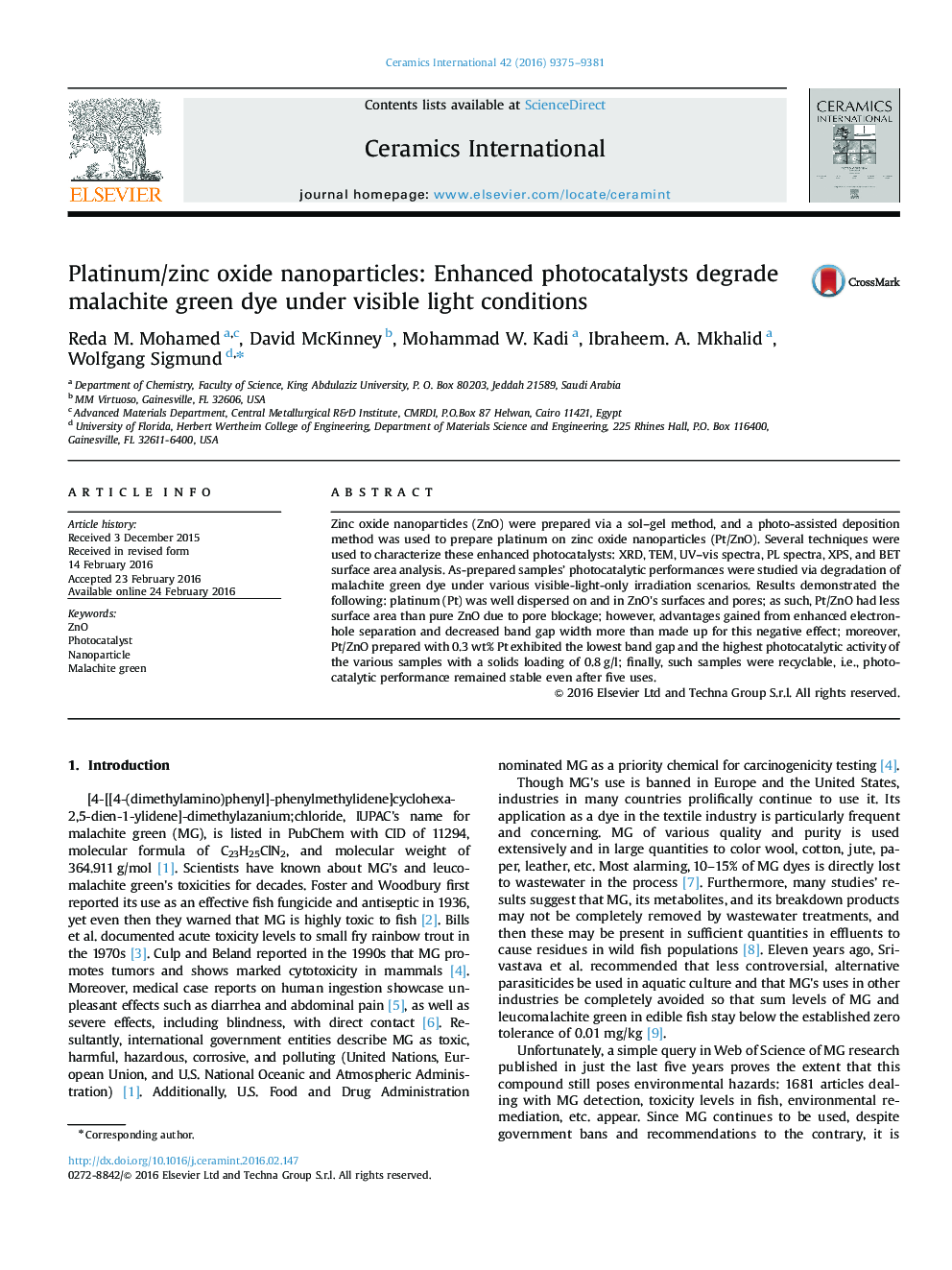| Article ID | Journal | Published Year | Pages | File Type |
|---|---|---|---|---|
| 1459001 | Ceramics International | 2016 | 7 Pages |
Abstract
Zinc oxide nanoparticles (ZnO) were prepared via a sol-gel method, and a photo-assisted deposition method was used to prepare platinum on zinc oxide nanoparticles (Pt/ZnO). Several techniques were used to characterize these enhanced photocatalysts: XRD, TEM, UV-vis spectra, PL spectra, XPS, and BET surface area analysis. As-prepared samples' photocatalytic performances were studied via degradation of malachite green dye under various visible-light-only irradiation scenarios. Results demonstrated the following: platinum (Pt) was well dispersed on and in ZnO's surfaces and pores; as such, Pt/ZnO had less surface area than pure ZnO due to pore blockage; however, advantages gained from enhanced electron-hole separation and decreased band gap width more than made up for this negative effect; moreover, Pt/ZnO prepared with 0.3Â wt% Pt exhibited the lowest band gap and the highest photocatalytic activity of the various samples with a solids loading of 0.8Â g/l; finally, such samples were recyclable, i.e., photocatalytic performance remained stable even after five uses.
Related Topics
Physical Sciences and Engineering
Materials Science
Ceramics and Composites
Authors
Reda M. Mohamed, David McKinney, Mohammad W. Kadi, Ibraheem. A. Mkhalid, Wolfgang Sigmund,
